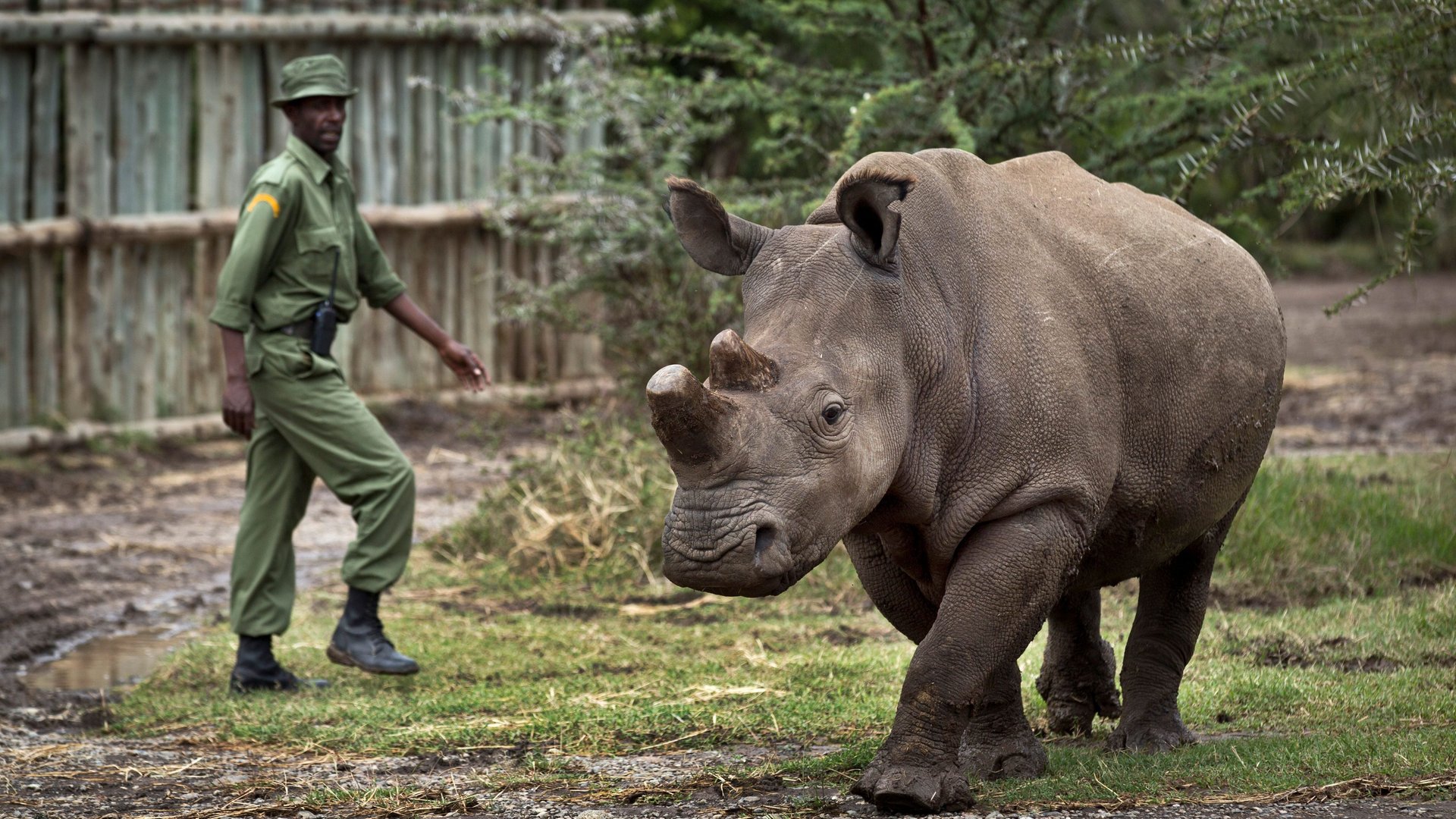Scientists may be able to save the northern white rhino from extinction after all
The northern white rhinoceros should have been untouchable, evolutionarily speaking. Reaching heights of over 6 feet (1.85 m) and weighing almost 8,000 pounds (3,600 kgs), these creatures are bigger than anything walking the other other than the elephants.


The northern white rhinoceros should have been untouchable, evolutionarily speaking. Reaching heights of over 6 feet (1.85 m) and weighing almost 8,000 pounds (3,600 kgs), these creatures are bigger than anything walking the other other than the elephants.
For all of their existence, the size of these animals deterred predators in their home in central Africa. Yet they are not bulletproof. Poachers kill them for their horns, which are valued for purported (but dubious) medicinal uses and as status symbols in parts of east and southeast Asia. They’ve managed to kill off all but two northern white rhinos, a mother and daughter living in the Ol Pejeta Conservancy in Kenya. The last male died in 2014, and even though both females can produce eggs, they’re unable to carry a pregnancy.
Rather than watching the species go extinct before their eyes, though, biologists have been hard at work trying to save the northern white rhino. They believe that via artificial insemination, the abundant southern white rhino, which lives on the southern tip of the African continent, can help their northern cousins survive—despite being a different species.
In a paper published Wednesday (July 4), an international team of researchers reported successfully creating hybrid in-vitro embryos using eggs obtained from a southern white rhinoceros and preserved sperm from a northern white rhinoceros.
A team working at the San Diego Zoo has already demonstrated the ability to artificially inseminate a female southern white rhino; she is now four months into her 16-month pregnancy with a southern white calf. The next step will be to see if these new hybrid embryos can be similarly implanted in a southern white rhino and, ideally, carried to term. Some of the embryos have been frozen and are awaiting that purpose.
Scientists will attempt to convert those embryos that were not frozen will be used into an embryonic stem cell line. These cells are the “gold standard” for creating egg cells and sperm cells, according to the study.
The whole process is an ordeal. There’s a very limited supply of preserved northern white rhinoceros semen, just 300 mL (less than a pint) remaining, and it’s not high quality. In this case, the team had to give the sperm tiny shocks of electricity to stun the sperm into swimming again. There is preserved skin from male northern white rhinos that scientists could theoretically convert into sperm cells, but the team hasn’t started this process yet.
Additionally, although it’s possible to extract eggs from female rhinos, it’s a difficult procedure, involving the insertion of a needle through the animal’s rectum to reach her ovaries. That’s understandably physically stressful on her (even if done while she’s sedated). So far, the team has only attempted the procedure with female southern white rhinos, but has plans to use eggs from the northern white rhinos in the future to create a non-hybrid northern white rhino embryo, pending permission from the Kenyan government.
The team hopes that the first northern-southern white rhino hybrid will be born roughly three years from now; they plan to spend a bit more time to perfect their artificial insemination techniques before attempting the real deal, and then will need to wait the 16-18 months of a typical white rhino gestation period. Breeding northern white rhinos will likely take decades over the span of several generations, but the payoff of saving a species we wiped off the planet will be worth the wait.